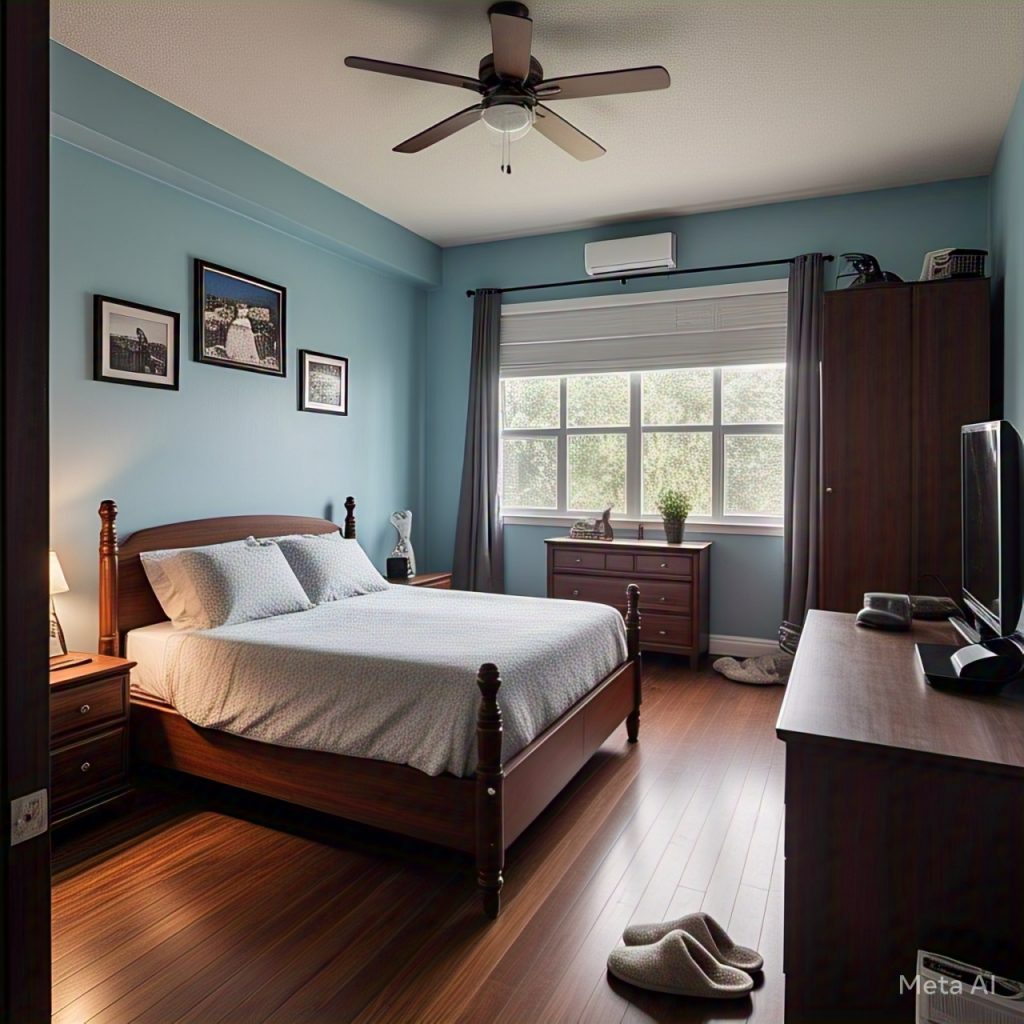Table of Contents
Biohazard Cleanup Service in Indianapolis
Biohazard Risks: When you think of biohazards, your mind might jump to crime scenes, hospitals, or industrial accidents. But did you know your home could be harboring unseen biohazard risks that could seriously threaten your health and well-being? These hidden dangers often go unnoticed until someone falls ill — and by then, the damage may already be done.
For immediate assistance with Biohazard Cleanup in fort wayne Indianapolis, contact PuroClean Disaster Restoration of west Fort Wayne, Call (+1) 260-263-9788.

Whether you’re a homeowner, renter, or landlord, being aware of indoor biohazard threats is essential. In this blog, we’ll uncover the most common biohazard risks in the home, how to detect them, and what to do to protect yourself and your family.
What Are Biohazards?
A biohazard, or biological hazard, refers to any biological substance that poses a threat to human health. This includes bacteria, viruses, fungi, and biological toxins. In the context of your home, biohazards can arise from:
- Water damage and mold
- Pest infestations
- Contaminated air or surfaces
- Human or animal waste
- Improper cleaning after illness or death
Top Unseen Biohazard Risks Hiding in Your Home
1. Mold and Mildew Growth
Mold is one of the most common indoor biohazards. It thrives in damp, humid conditions — bathrooms, basements, behind walls, and around leaky pipes.
- Health Risks: Respiratory issues, allergic reactions, headaches, fatigue, and long-term lung damage.
- Look Out For: Musty smells, discoloration on walls or ceilings, peeling wallpaper.
- Quick Fix: Improve ventilation, use dehumidifiers, and address leaks immediately.
2. Rodent and Pest Droppings
Rodents and insects can leave behind droppings and urine, which can carry dangerous pathogens like Hantavirus, Salmonella, and E. coli.
- Where It Hides: Attics, basements, kitchen cabinets, behind appliances.
- Health Risks: Fever, vomiting, respiratory complications, skin irritation.
- Quick Fix: Seal entry points, use humane traps, and hire a pest control professional.
3. Improperly Cleaned Blood or Bodily Fluids
After a home accident or an illness, improper cleaning of blood or other bodily fluids can leave behind dangerous bacteria like MRSA or viruses like Hepatitis B/C.
- Health Risks: Bloodborne diseases, bacterial infections.
- Quick Fix: Use proper personal protective equipment (PPE) and EPA-approved disinfectants, or call a professional biohazard cleaning service.
4. Sewage Backups
Sewage water is a major biohazard. It contains fecal matter, bacteria, parasites, and viruses that can be deadly when inhaled or ingested.
- Warning Signs: Foul smells, slow drains, gurgling toilets, water backup.
- Health Risks: Gastrointestinal illness, skin infections, parasitic infections.
- Quick Fix: Never attempt DIY sewage cleanup — call a professional restoration service.
5. Dirty HVAC Systems
Your HVAC system can harbor dust, dander, mold spores, and bacteria, especially if filters aren’t changed regularly.
- Health Risks: Asthma attacks, allergic reactions, sinus issues, fatigue.
- Quick Fix: Change filters every 1-3 months and schedule professional cleanings annually.
6. Pet Waste and Dander
Pets bring love and comfort — but also bacteria, parasites, and allergens into the home. Pet urine can seep into carpets and floors, while pet feces can contain harmful parasites like Toxoplasma gondii.
- Health Risks: Asthma, toxoplasmosis, bacterial infections.
- Quick Fix: Scoop and clean litter boxes daily, vacuum often, and use pet-safe cleaners.
7. Contaminated Water
From lead in old pipes to bacteria in private wells, unsafe drinking water is a serious but often overlooked home biohazard.
- Health Risks: Developmental delays in children, kidney problems, gastrointestinal illness.
- Quick Fix: Test your water annually and install certified water filtration systems.
8. Leftover Food Waste and Spoilage
Unnoticed leftovers or spoiled food in corners of your refrigerator or pantry can breed Listeria, Salmonella, and mold.
- Health Risks: Food poisoning, allergic reactions.
- Quick Fix: Clean your fridge weekly, discard expired food, and keep dry food sealed.
9. Unnoticed Death or Decomposition (in rental or vacant properties)
In unfortunate cases such as unattended death, decomposition can lead to airborne pathogens, strong odors, and serious biohazard risks that are not easy to neutralize.
- Warning Signs: Strong unexplained odors, flies, stains on floors or walls.
- Action Step: Contact a certified biohazard remediation service immediately.

How to Detect Biohazards at Home
Here are signs that you might have a biohazard problem:
- Persistent bad odors
- Sudden illness or respiratory issues
- Unexplained allergic reactions
- Visible mold, stains, or pest droppings
- Water stains or leaks
The Importance of Professional Biohazard Cleanup in Fort Wayne
Professional biohazard cleanup services are trained to safely remove, disinfect, and dispose of hazardous materials. DIY cleanup can expose you to serious health risks and may fail to eliminate contaminants entirely.
Why hire a professional?
- Certified in OSHA standards
- Use of proper PPE and disinfectants
- Safe disposal of hazardous materials
- Prevents cross-contamination and future outbreaks
Protecting Your Home and Family from Biohazard Risks
Prevention Tips:
- Schedule regular home inspections
- Address leaks, moisture, and ventilation issues quickly
- Keep your HVAC and plumbing systems maintained
- Practice safe food and pet hygiene
- Dispose of trash promptly and sanitize regularly
Common Questions on Biohazard Risks
When people use voice search, they typically ask questions like:
- “Why is there a musty smell in my house?”
- “Is mold behind walls dangerous?”
- “How do I clean up after a sewage backup?”
- “Are pet droppings a health risk?”

FAQs on Biohazard Risks
What is considered a biohazard in a home?
A biohazard is any substance that poses a risk to human health due to biological contamination. In the home, common biohazards include mold, bodily fluids, pest waste, sewage, contaminated air, and pet waste.
How do I know if there’s mold in my home?
Look for musty odors, visible patches of mold on walls, ceilings, or tiles, and symptoms like coughing, sneezing, or itchy eyes. Mold can grow behind walls and in hidden damp areas, so if you’re unsure, get a mold inspection.
Can I clean up a biohazard myself?
While minor spills can be managed with disinfectants and PPE, major biohazards like blood spills, sewage backups, or unattended death scenes should always be cleaned by professionals to prevent exposure and contamination.
How dangerous is pet waste?
Pet feces can contain harmful parasites such as Toxoplasma gondii and bacteria like Salmonella. Pet urine can also degrade indoor air quality and damage flooring. Always clean pet waste promptly and safely.
Are HVAC systems a source of biohazards?
Yes. If not cleaned regularly, HVAC systems can circulate dust, mold spores, bacteria, and allergens. Dirty filters and moisture buildup in ducts can be breeding grounds for biohazards.
What are signs of a sewage backup?
A strong, foul smell coming from drains, gurgling sounds in toilets, slow draining water, or actual water backup in tubs and sinks are all signs. Do not attempt to clean it yourself — contact a biohazard cleanup expert immediately.
Is spoiled food a biohazard?
Yes. Spoiled food can grow dangerous bacteria like Listeria or Salmonella and attract pests. It can also produce toxins that are harmful when ingested. Discard expired items and sanitize storage areas.
Can biohazards in my home cause long-term health problems?
Absolutely. Prolonged exposure to mold, bacteria, or toxic materials can lead to chronic respiratory issues, neurological disorders, immune system problems, and more. It’s essential to take action as soon as you suspect a biohazard.
How often should I inspect my home for biohazards?
A full inspection every 6-12 months is a good rule. High-risk areas like basements, bathrooms, kitchens, and HVAC systems should be monitored regularly for moisture, mold, pests, and odors.
Who do I call for home biohazard cleanup?
You should contact a certified biohazard remediation or property restoration company. Look for those with IICRC or OSHA certifications, experience in residential cleanup, and positive local reviews.
Final Thoughts
Unseen biohazard risks in your home are real, dangerous, and more common than you might think. From hidden mold to contaminated air vents, these threats can silently impact your health and well-being. By staying informed, maintaining your home, and calling in professionals when needed, you can protect yourself and your loved ones from these invisible hazards.
Don’t wait for symptoms to show — prevention is the best protection.
Need help with a professional biohazard inspection or cleanup? Contact a certified restoration expert fort wayne Indianapolis, click here to get started.
 PuroClean Disaster Restoration of West Fort Wayne
PuroClean Disaster Restoration of West Fort Wayne